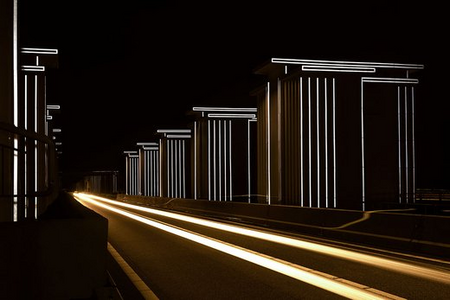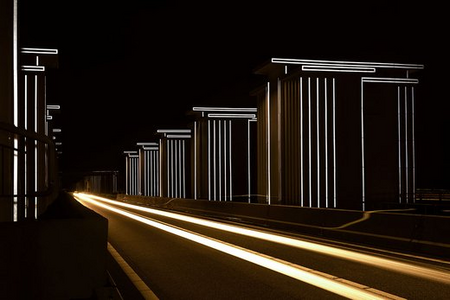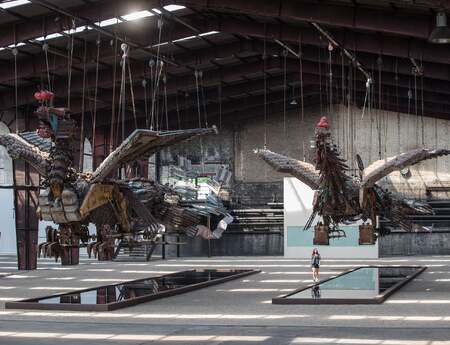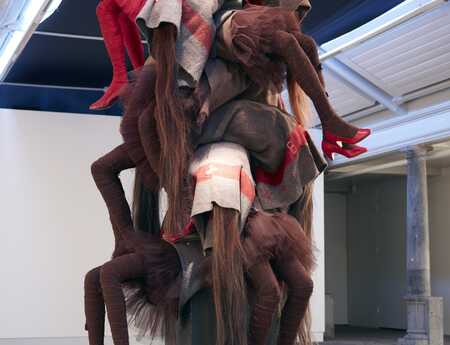An architectural masterpiece highlighted by physics and biology
About the art project Icoon Afsluitdijk
Afsluitdijk is a 32-kilometre dike in Netherlands, built by hand in 1932. To this day, it protects the inhabitants from the violence of the tidal flats of the Wadden Sea. After more than 80 years of intensive use, it was completely renewed and also staged artistically.
Icoon Afsluitdijk consists of one permanent intervention, Gates of Light, and recently two temporary installations, Windvogel (Windbird) and Glowing Nature, which were presented until 21.01.2018. Commissioned by the Dutch Government and conceived by Daan Roosegaarde along with his team, the project aims to highlight the key functions of the construction - water protection, energy and mobility. Interaction, innovation and beauty are central to what Roosegaarde calls "techno-poetry". As a result, Afsluitdijk should live up to its reputation as the ideal of hydraulic engineering.
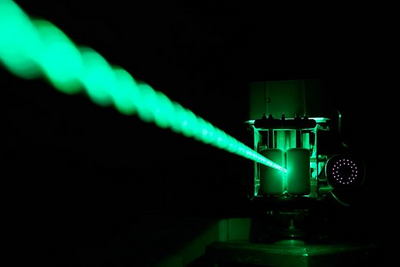
The project kicked off in 2016 with Waterlicht, a poetic light installation, evoking the role of the dike to protect the Netherlands from floods. It served as a kind of northern lights of the Netherlands and showed where the water would go without the construction of the Afsluitdijk. At the same time, Spiegelstenen was created, a unique series of light-reflecting mirrors made from old basalt blocks. They represented a tribute to the 5.000 workers who built the dyke by hand within five years. In addition, 6 of the mirrors were awarded to important personalities who had committed themselves to the maintenance of Afsluitdijk.
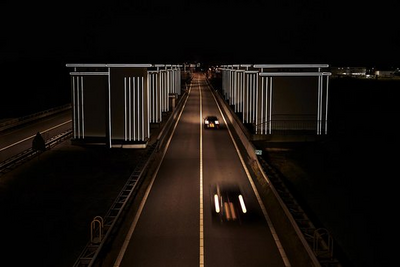
Gates of Light is an artistic intervention working with the sixty lifting towers which were originally designed by Dirk Roosenburg in 1932. They have been fully restored and contoured with a retroreflective layer. Daan Roosegaarde was inspired by butterfly wings. “I want to create experiences which you cannot download, places you want to see with your own eyes. By adding a subtle layer of light and interaction, we enhance the beauty of the dike and form new links between man and landscape, darkness and light, poetry and practice,” Dan Roosegarde declared. The towers wake up to new life after sunset. Headlights of passing cars are reflected by small prisms. Hence no energy or electrical supply is required and no light pollution is produced as the structures only reflect the already existing light from the 20.000 cars that cross the dike every day.
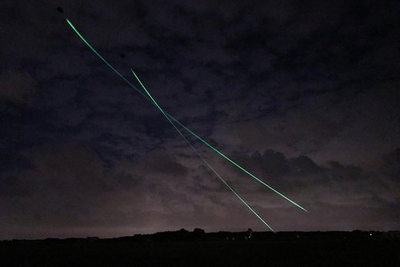
Windvogel was developed in collaboration with the Delft University of Technology and is a tribute to Dutch physicist and astronaut, Wubbo Ockels. Ockels dreamed of a power-generating kite and Roosegaarde made it to become reality. The high floating kites generate energy from the wind ranging from 20 kW up to 100 kW. In addition to Ockels’ dream, Roosegaarde designed luminous cables for the kites which were connected to a ground station. The push and pull movements of the cables created a choreography of dancing lines whilst visualising the energy generated.
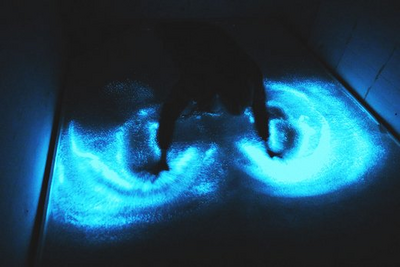
Glowing Nature used bioluminescent algae, cultivated to give more light and to live longer. One of the oldest organisms of the planet, these micro-organisms have been used to produce an immersive installation located inside the historical bunker, dating from 1932 on the Friesland side of the dike. Visitors could interact directly with the algae which emit light when they move, resulting in an encounter between man, biology and technology, an interactive experience glowing upon the visitors steps and movements.
More Informations:
Icoon Afsluitdijk - Studio Roosegaarde,
Windvogel & Glowing Nature,
Gates of Light: www.studioroosegaarde.net
The Afsluitdijk, NL: www.deafsluitdijk.nl
